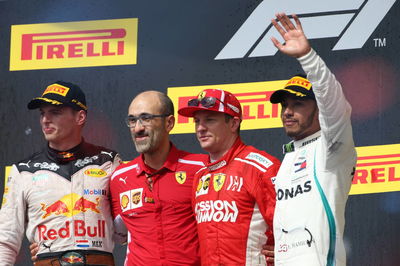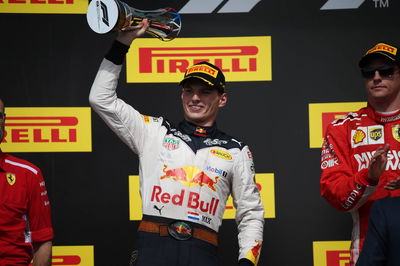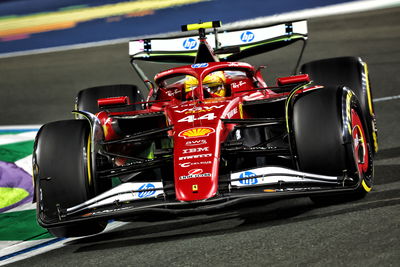F1 Race Analysis: How Mercedes' strategy gamble backfired
It’s very rare for the Formula 1 media centre to break out in applause at the result of a race, but such is the rarity of a Kimi Raikkonen victory nowadays, there was little surprise the assembled journalists (yours truly included) showed a sign of congratulations to the Ferrari man upon the chequered flag in Austin on Sunday.
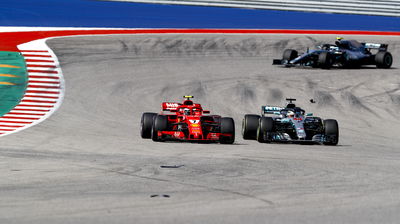
It’s very rare for the Formula 1 media centre to break out in applause at the result of a race, but such is the rarity of a Kimi Raikkonen victory nowadays, there was little surprise the assembled journalists (yours truly included) showed a sign of congratulations to the Ferrari man upon the chequered flag in Austin on Sunday.
For the first time in over five-and-a-half years - and more than nine in Ferrari colours - Raikkonen was a race winner again. For all of the jokes about dud strategy calls from Ferrari and its tendency to favour Sebastian Vettel, this time around, the team did everything right, allowing Raikkonen to take a hugely popular victory in superb fashion.
The result was a surprise in many ways, most of all for the fact there was no coronation party as anticipated for Lewis Hamilton. Needing only an eight-point swing over Vettel to clinch his fifth title with three races to spare and starting from pole position, it seemed highly likely that matters would be settled in Austin. When Vettel spun around during his wheel-to-wheel fight with Daniel Ricciardo on the opening lap of the race, even with Hamilton running P2 behind Raikkonen, the odds were stacked heavily in his favour.
But Mercedes’ push to win the race with Hamilton prompted a strategy call that ultimately backfired, forcing the champagne bottles to be put on ice ahead of their likely uncorking in Mexico next Sunday.
Mercedes may have felt qualifying on the Supersofts would help in terms of strategy, making it an easy one-stop for Hamilton, but it actually contributed to his decline in the end.This was most evident at the start when, fitted with the faster Ultrasoft compound, Raikkonen was able to get a better start and dive up the inside of Hamilton at Turn 1 before pulling out a decent buffer through the first stint.
The Virtual Safety Car called on Lap 10 following Daniel Ricciardo’s on-track stoppage forced the pit walls into action. The benefit of pitting under VSC is clear, for with the rest of the field at a reduced speed, the time lost in the pits is around nine seconds instead of 19. For Raikkonen in particular, it seemed like a great opportunity to get rid of the Ultrasofts and minimise the time lost to Hamilton.
Hamilton was told over team radio to do the opposite to Raikkonen at the end of Lap 11, with the Mercedes pit crew preparing for a possible stop. Ferrari’s mechanics remained seated in the garage, prompting Hamilton to pit, take on a set of Softs and emerge from the pits in P3. The gap to Raikkonen stood at just eight seconds, meaning Hamilton theoretically had 11 seconds in hand.
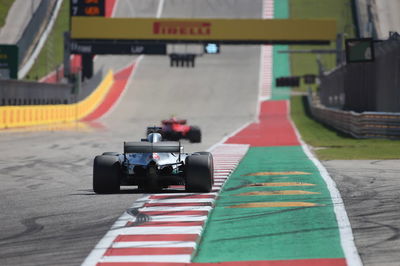
It seemed to be a massive own goal from Ferrari, particularly as Hamilton was able to take advantage of Raikkonen’s fading tyres and dipping lap times to close up in the space of seven laps, having been waved past teammate Valtteri Bottas. The feeling was that a one-stop strategy was still possible even after such an early stop, meaning that while Hamilton would have older tyres, he’d also enjoy a near-20-second buffer over Raikkonen once the Finn stopped.
Yet Mercedes did not see it that way. Team boss Toto Wolff explained after the race that the moment Hamilton came in under the VSC, the plan was always to two-stop: “We were running second on the road and thought that by moving to a two-stop at that stage, we would only lose a position to Valtteri, catch up Kimi and then effectively be on the same one more stop to do but on a better tyre. That was the thinking.
“We committed to a two-stop at that stage, also because our car wasn’t great and the tyres were degrading, so it all went against us.”
The alarm bells had begun to ring for Mercedes, yet the strategy was still playing out much as Wolff had hoped. Hamilton had caught Raikkonen quickly, with both drivers still to do one further stop, and he would have fresher tyres later in the race. Both victory and the title were on in Austin.
Raikkonen had other ideas though. Far from being the non-plussed, unmotivated racer he is unfairly made out to be at points, Raikkonen dug deep in his defence of P1 from Hamilton. Ferrari’s straight-line speed remains a cut above Mercedes’, as seen in how Raikkonen was able to pull clear on the back straight. If Hamilton was going to get into the lead, he’d have to work for it.
Work for it Hamilton did, cooking his tyres in the process. With his job done, Raikkonen pitted from the lead at the end of Lap 21, knowing he had gone long enough to get to the end of the race on a single set of Softs. Hamilton was released, with the buffer to Raikkonen growing to over 17 seconds.
It was in this phase of the race Hamilton’s tyres started to show signs of blistering as they neared the cliff, his times dropping off dramatically soon after. His laps went from mid-1m39s from Laps 25-30 to 1m41s in laps 33-37, causing the gap to Raikkonen to go from a stable 17 seconds to less than eight in the same period.
“The thinking was that if we were to bite the bullet a little bit more, we would have a larger tyre differential at the end,” Wolff explained.
“But then we started to drop massive pace and probably we were a lap or two late in pitting Lewis because the tyres dropped off in the mid-38s, low-39s to 41s.”
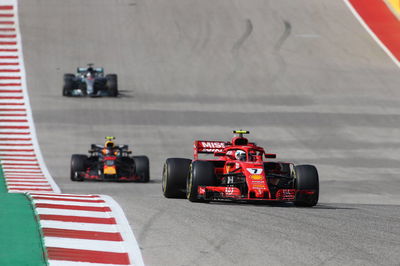
That lap or two proved decisive in the race. It wasn’t even as though Mercedes was holding on so that Hamilton could run with Supersofts or Ultrasofts for the final stint, as he had no fresh sets remaining, meaning all he could use was another set of Softs. With a little hindsight, it’s easy to say an earlier stop would have been wise before the massive drop-off happened.
But the damaging blow in all of this wasn’t the reduced gap to Raikkonen: it was the reduced gap to Max Verstappen, who had risen from 18th on the grid to run second. Verstappen managed to get the undercut on Valtteri Bottas for net third and fitted Supersofts that he would somehow get to the end of the race with a stunning second stint.
Before the pace drop-off, Hamilton had been comfortably safe to Verstappen, running 21 seconds ahead. Even when the gap fell to around 19 seconds, it seemed likely that with fresh tyres, Hamilton would be able to make a pass. But by the time he eventually pitted for a second time, the gap was just nine seconds, leaving him with a sizeable gap to make up.
While Hamilton was able to recover the time and catch Verstappen, passing was another matter. The Red Bull driver had plenty of life left in his Supersofts, meaning that try as Hamilton might, he couldn’t make it through. It culminated in a wonderful battle between the pair going side-by-side through the complex of right-handers in the final sector that Verstappen ultimately won, forcing Hamilton to drop back and accept defeat.
“I think ultimately I came out and the pit window was very, very close, but then after I did my stop it was 12 seconds and it was way, way too far to catch up,” Hamilton said.
“I’m not really quite sure how the strategy ended up like that. It’s always difficult. You only have a certain amount of life with the brand new tyre to make a difference and once you put 12 seconds up there’s none left.”
We saw earlier in the season that Mercedes was weaker on the softer compounds, being strongest on Mediums in particular, and it seems that issue arose again today. Both Hamilton and Bottas - who lost P4 to Vettel with two laps to go as he tried to make a one-stop work - struggled as Ferrari and Red Bull enjoyed far better tyre life, easily completing one-stop strategies.
But credit must be given to Mercedes for going all-out for the win with Hamilton. With Vettel facing a recovery drive, the team could have just played it safe, looked to get P2 and hope that was enough for Hamilton. But that isn’t the way Mercedes operates. It goes out weekend after weekend looking to win, not just do 'enough'.
